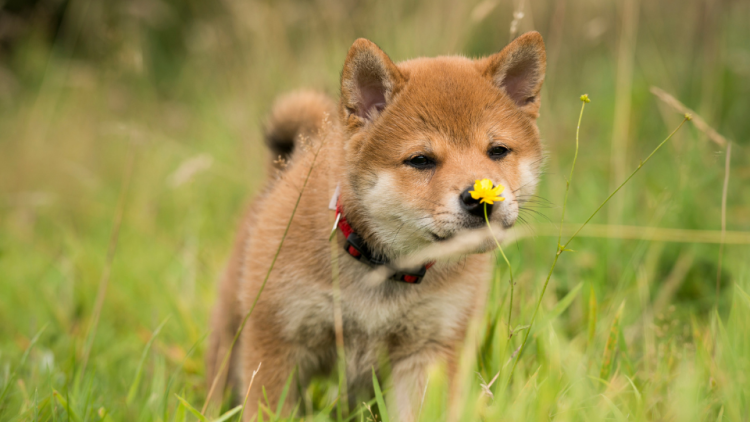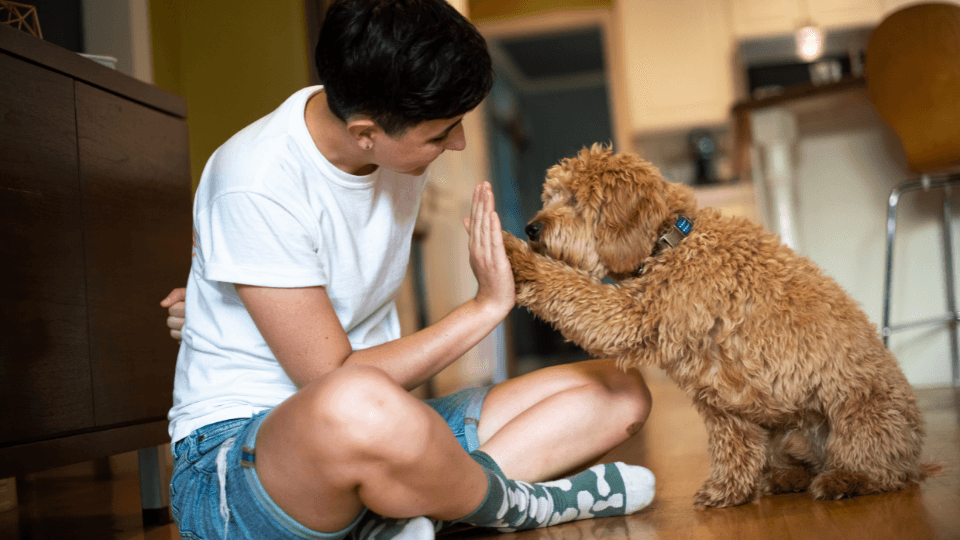Many new pet parents wonder, “How do I train a puppy?” — especially if they’ve never done it before. But no matter your experience level, training a puppy can always be a daunting task.
Not only does it require an immense amount of patience, but it's also easy to become overwhelmed by the sea of information on various training techniques. As a devoted pet parent, how do you know what's best for your four-legged family member when each philosophy claims to be the only way or the correct way to train your puppy?
Get Organized With A New Puppy Checklist
Be Sure To Avoid These Training Mistakes
As if all of that weren’t confusing enough, there’s also the question of breed. Different dog breeds have widely varying attributes, tendencies, strengths, and weaknesses. The perfect method to train a Border Collie or German Shepherd is unlikely to work as well on a Boston Terrier or Pomeranian, for example.
Fortunately, there are several effective ways to train a puppy to be the pet of your dreams — not just one. Any of them may be the perfect approach for you, your family, and your dog as you all begin to build a strong, loving relationship.
In this article. we’ll go over how to train your puppy in four different ways so you can see which strategy works best for both you and your dog. Keep reading to learn tried-and-true puppy training techniques, or use the links below to jump ahead to a section you’re most interested in.
What are the different ways to train your puppy?
1. How to Train Puppies with Clicker Training
Clicker training, the most common way to train puppies, relies on a sound as the primary cue for good behavior. It can take a little longer to get started with because you have to first teach your dog to associate the clicking sound with a reward, a process known as positive reinforcement.
Positive reinforcement is a principle of operant conditioning in classical psychology that involves the addition of a pleasant stimulus to reinforce the performance of a desired behavior.
For example, if you’re teaching your puppy the “Sit” command, you’d want to press the clicker immediately after he or she exhibits the target behavior (i.e. sits down) then follow up with a reward. As soon as their butt touches the floor, quickly respond with “click, treat”.
The first couple of times they perform the command, it’ll probably be unintentional. Maybe they’re watching a treat in your hand that you raise past their head, causing them to naturally lower their hips and bring their rear end to the ground as they look up and back. Other times, your little learner could be exhausted from the mental work puppy training demands, and they might simply have a seat just to rest, not because you commanded so.
Regardless, click every time they do whatever target behavior it is that you’re working on, no matter how messy it may look at the beginning. The first time they hear the sound, they might appear startled or confused, but eventually, your dog will realize “I hear this sound, I get a reward… I hear this sound when I do this (behavior)… doing this behavior is a good thing.”
Robert Thomas from Marvelous Dogs says, “One advantage of clicker training is that many people find it faster to click a clicker than to get a treat or pet their dog. This makes it easier for the clicker reward to be activated within the two-second window where most dogs will associate it with the behavior they exhibited”.
Once you understand how to train a puppy with a clicker, you can start being more selective about which behaviors to reward; for example, requiring your dog to put both forearms and elbows all the way down in the “Lay Down” command before giving them a treat. You can also start building upon behaviors to teach your dog more complex tricks that involve multiple steps, clicking at each interval to let them know they’re on the right track and doing what you want them to do.
Clicker training a puppy also allows you to practice obedience at increased distances and durations, thereby strengthening your bond. However, it’s also great for dogs with shorter attention spans (including puppies).
This training technique is ideal for owners who want to train their pets on the go or in public spaces without having to carry a bag of treats around everywhere. It’s also a fantastic way to prevent overfeeding your dog too many training treats that are often packed with delicious calories to keep their food motivation strong, thereby helping them to avoid weight gain and secondary health complications.
2. How to Train Puppies with an E-collar
E-collar training makes use of positive punishment, or the addition of an unfavorable stimulus, to train your dog away from undesirable behaviors. When activated by the trainer’s remote, the e-collar can administer a high-pitched sound or quick vibration to interrupt what the dog is doing.

Contrary to some common misconceptions, not all e-collars are inhumane “shock collars”; some can even release a strong odor that dogs find unpleasant. They are also not “bark collars”, which go off automatically when activated by a dog’s vibrating vocal cords while barking, but tend to do so rather inconsistently.
"One of the biggest advantages of e-collar training is that it allows you to interupt a potentially dangerous behavior without being in close physical proximity to your pet," explains dog trainer, Kaelee Nelson. "This can be especially helpful for recall training a puppy off-leash, given the abundance of distractions outdoors that can consume your dog’s attention and toss all of your obedience commands right out the door."
If your puppy gets on a scent, sees a squirrel, or chases after a cat into the street, e-collar training could potentially save their life one day by preventing a devastating accident in oncoming traffic. Pet insurance and e-collars can provide valuable peace of mind in these scary situations.
Also, remember that positive punishment works best with positive reinforcement, so always keep a rewards-based system in play whenever your pup does what it should. Even affection through praise and pets can be highly effective by encouraging them to continue working hard for the human they love and respect.
3. How to Train Puppies Through Lifestyle
Lifestyle training focuses on integrating your dog completely into your day-to-day life. It’s best for working dogs and service animals, not domesticated pets. Puppy training with this technique will eventually lead to your dog walking quietly by your side wherever you go.
In many cases, service dogs are also trained to perform certain tasks, such as reminding their owner to take prescription medication, intervening during a PTSD panic attack, or signaling an alert before an epileptic seizure.
The key to successful lifestyle training is a commitment to near-constant behavior rewards and correction. As one example, instead of crating your dog during meals, work with them on sitting quietly underneath the table.
Anyone undertaking this approach should know that it will require a much larger time commitment than basic training, but the rewards are also that much greater. If you’re in need of a 24-hour canine companion, you might consider hiring a professional trainer.
4. How to Train Puppies Through a Relationship
Relationship-based training a puppy focuses on the bond between the pet and owner. You learn your dog’s individual personality, body language, and cues to try to get inside their head and figure out why they are or are not completing a certain behavior.
This technique often makes use of negative punishment, or the removal of a favorable stimulus to deter unwanted behavior. Attention from the trainer becomes the main reward, therefore the absence of that attention serves as an effective punishment. Progress can be much slower to achieve, but the approach can be especially useful for nervous or shy dogs.
It will also offer big rewards for anyone looking to train a puppy to become an incredibly loyal dog, as it will form an intensely strong bond between the owner and the animal. For that same reason, relationship-based training is probably not ideal for families learning how to train a puppy who responds to each member of the household equally.
What is the best way to train a puppy?
Training a puppy can be difficult and requires a ton of patience, but it is also an immensely rewarding process — even more so when the trainer and the dog are able to work together using an effective method of communication that works for both of them.
Ultimately, no singular method is “better” than the other. You’ll achieve the best results by implementing a balanced blend of positive and negative reinforcement and punishment, mixed in with plenty of love and affection.
